Art
Why Manet’s Masterpiece Has Confounded Historians for over a Century
Paris, 1863. The French government prepares to launch its biannual Salon, which hosts the day’s most important painting and sculpture in the city’s Academie des Beaux-Arts. Artists from around Europe submit their landscapes, portraits, still lifes, and historical scenes for consideration. A jury determines which artists will—and will not—be permitted to exhibit their work on the academy’s hallowed walls. They ultimately reject canvases by such luminaries as
,
,
, and
.
In an attempt to appease the spurned artists, Emperor Napoleon III establishes a separate exhibition, called the “Salon des Refusés,” to be held at the Palais de l’Industrie. Instead of becoming derided outcasts, however, the refusés ultimately achieve long-lasting fame; history remembers the group as avant-garde pioneers. “The Salon des Refusés may very well represent the most decisive institutional development in the progress of modern art,” art historian Albert Boime once wrote.
Manet’s Le Déjeuner sur l’herbe (1863), known in English as The Luncheon on the Grass, was first shown in this historic exhibition. The artwork not only stirred controversy, it also helped inaugurate a new kind of painting. The canvas, which features two clothed men and two women—one half-dressed and the other nude—picnicking in a verdant grove, has inspired too many interpretations to count. Over the past 156 years, artists and critics alike have continued to generate novel ways to find meaning in what’s now one of Western art history’s most iconic images.
“It’s up to us to make sense of it according to our own priorities and interpretations,” art historian Steven Z. Levine told me recently by phone. The painting “remains precious to us because it gives us the chance to reflect ourselves. We learn about ourselves by writing about the work of art.” Over the decades, scholars have alternately written about the work from feminist, formalist, and Marxist lenses, looking, respectively, at its depiction of women, its position within a larger history of the medium, and its situation within a socioeconomic and political framework.
One of the reasons for the diverse responses is because Manet left us little indication of his own motives for Le Déjeuner. Art historian Richard R. Brettell once described the artist’s own elusiveness. “His letters are few and far between,” he wrote, “and, therefore, his feelings and psychological problems are difficult either to document or to imagine.” That mysteriousness hasn’t stopped other scholars from attributing a motive. Nancy Locke, for example, has attempted to root Manet’s artistic impulse in his family life. The artist, after all, is said to have modeled one of the men in Le Déjeuner sur l’herbe as a composite of his two brothers, Eugène and Gustave. The nude female figure in the foreground of the painting was likewise inspired by Manet’s favorite model, Victorine Meurent, who posed as the central figure for many of his other canvases, including his 1863 masterpiece Olympia.
What historians do know for sure is that Manet intended it for the Salon rather than for private hands. This decision marked a major departure in artistic practice. Up through the previous generation of artists (which included
, who died in 1863, the same year of the Salon des Refusés), artists had worked almost exclusively on commissions from the church, state, or wealthy patrons. Manet serves as evidence that artists were becoming increasingly autonomous, establishing their own unique visions by self-determining what to capture on canvas or in sculpture.
Yet there was still a strict hierarchy for different painting genres. The academy ranked historical scenes first, followed by portraiture, landscape, and finally still lifes. “What Manet does [in Le Déjeuner sur l’herbe],” art historian Therese Dolan told me, “is take on each category…borrowing iconography from
paintings and changing it so dramatically that it looks like a mockery.” The monumental painting features a group of human subjects, a natural landscape, and a basket of fruit in a quintessential art-historical form—the pastoral respite.
Art historians—most notably, Michael Fried—have cited Manet’s varied source materials to interpret the painting. The Pastoral Concert (ca. 1509), first attributed to
and then to
, features two nude women and two clothed men sitting on a grassy knoll in a position akin to the figures in Le Déjeuner. Giorgione’s earlier painting The Tempest (1506–08)—which features a half-clothed woman breastfeeding her baby on a grassy slope, looking almost at the viewer instead of at the soldier just beyond her—is additionally seen as a precursor. The enigmatic figure poses almost exactly like the central woman in Manet’s canvas. To drive home his allusions to Italian Renaissance masters, Manet also referred to
’s engraving based on
’s The Judgment of Paris(ca. 1510–20), which also shows three characters sitting on the grass in a pose mimicked by Manet’s figures.
The 18th-century French painter
’s La Partie Carrée(or The Foursome) from about 1713 has also been named as a possible reference point. This painting similarly features four conversing figures (again, two men and two women) spotlit in a garden at night. In his own work, Manet took the provocations of Watteau’s painting—the subjects appear to have sneaked out of their homes for a late-night rendezvous, and the title hints at sexual undertones—and amplified them to scandalous proportions. Such explicit lust in Le Déjeuner sur l’herbe shocked the painting’s first audiences—as did the fact that the clothed men are cavorting with women who are most likely sex workers.

Antoine Watteau, The Foursome, ca. 1713. Image via Wikimedia Commons.
By quoting other masterworks spanning centuries and nationalities, Manet augured a major modernist enterprise. “People realized painting was old and needed to change, and Manet was changing it,” Dolan said. “He kicked dirt in the face of the academics.” Since the exhibition of Le Déjeuner sur l’herbe, artists from
to
have made the re-making of past paintings (including Manet’s) an integral part of their practices.
Just two years after the Salon des Refusés, Monet created his own version of Le Déjeuner sur l’herbe in his famously sunny
style. Picasso devoted an entire series to reimagining
’s iconic Las Meninas(1665), and explicitly explored Manet’s original composition in his own massive “Luncheon on the Grass” series (1959–61), comprised of over 200 paintings, drawings, maquettes, and prints. More recently,
restaged Manet’s famous scene with a group of African-American women at the Museum of Modern Art.
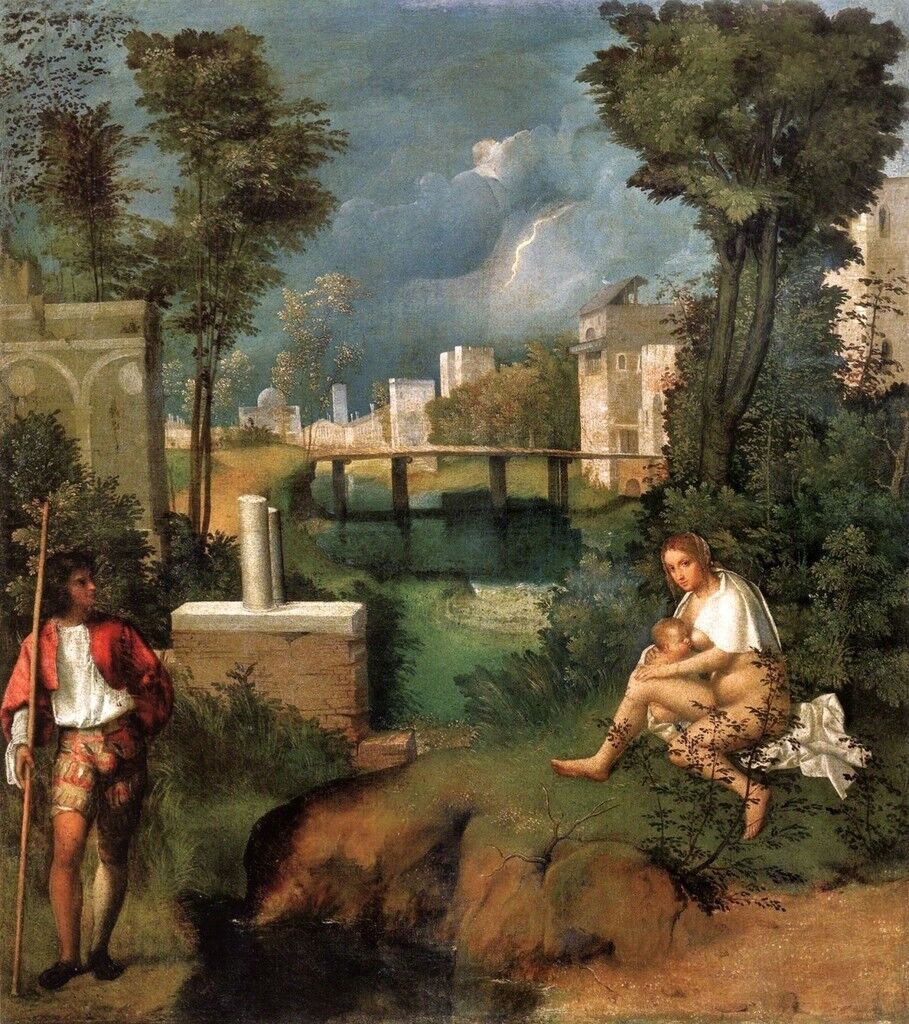
Giorgione
The Tempest, ca. 1506
Galleria dell'Accademia, Venice
As a provocation for the art press, the painting certainly worked. Levine mentioned how the 1860s also saw the birth of a new brand of critic—the unstudied journalist who brought his or her own angle, a “left political slant or right political slant to bear in writing about works of art.” Writers were politicizing art in a new way, a phenomenon which led to a “moment that feels very familiar to us,” Levine said.
In her essay “Sex and the Salon,” Elizabeth Anne McCauley writes that the day’s serious art journals didn’t even report on the Salon des Refusés, while “coverage in the large Parisian dailies or weeklies was…much better.” The “serious” art critics, in other words, were quickly losing cultural sway to new writers from a variety of backgrounds.
Levine mentioned two central issues of Manet’s time—nationalism and gentrification—that also feel familiar. Manet found inspiration in both Georges-Eugène Haussmann’s ongoing renovations of Paris (which resulted in the wide boulevards and regal façades we know today) and the burgeoning competition between European countries for cultural and political dominance (the Franco-Prussian War, which ultimately laid the groundwork for World War I, was just years away).
One of the preeminent Manet scholars, T.J. Clark, has focused on these particular issues, situating Le Déjeuner sur l’herbe within an atmosphere of uncertainty about Paris’s rapid development on a local and international level. At the time it was painted, “Marx is sitting in Manchester, telling workers of the world to unite,” Levine explained. “There’s a destruction of working-class quarters to facilitate the investment banking that is underwriting the Paris of today.” In this context, two well-heeled gentlemen taking two sex workers to a picnic adopts modern connotations about class and capital.
Such disparity in wealth and social position among the men and women in the work has also inspired feminist responses. In 1968, Linda Nochlin wroteabout the painting as a “mockery of the ‘timeless’ Raphaelesque composition, [which] must have seemed as full of protest and constituted as destructive and vicious a gesture as that of
when he painted a mustache on the Mona Lisa.” More recently, McCauley and Carol Armstrong have examined whether the representation of the nude woman in the painting’s foreground is degrading or empowering—she at first seems subservient to the men, yet stares confrontationally at the viewer.
Perhaps one of the reasons that the painting has generated such a bevy of scholarship is its uncanny narrative quality. The lusty foursome in a beautiful but unplaceable setting contains all the elements of a captivating story. The characters have escaped the civilized city for the wild woods, enjoyed some sort of sexual activity, and all but forgotten the meal they’ve packed—no one, it seems, has touched the bread, cherries, or other fruit that falls out of the basket on the lower-left-hand side of the painting.
What will happen when they return to Paris? Manet catches the quartet at a quiet moment before the pressures of society, propriety, and class once again constrict their lives. It’s no wonder that French writer Émile Zola was a major advocate of both Manet and Le Déjeuner sur l’herbe—the novel nearly writes itself.
Alina Cohen is a Staff Writer at Artsy.

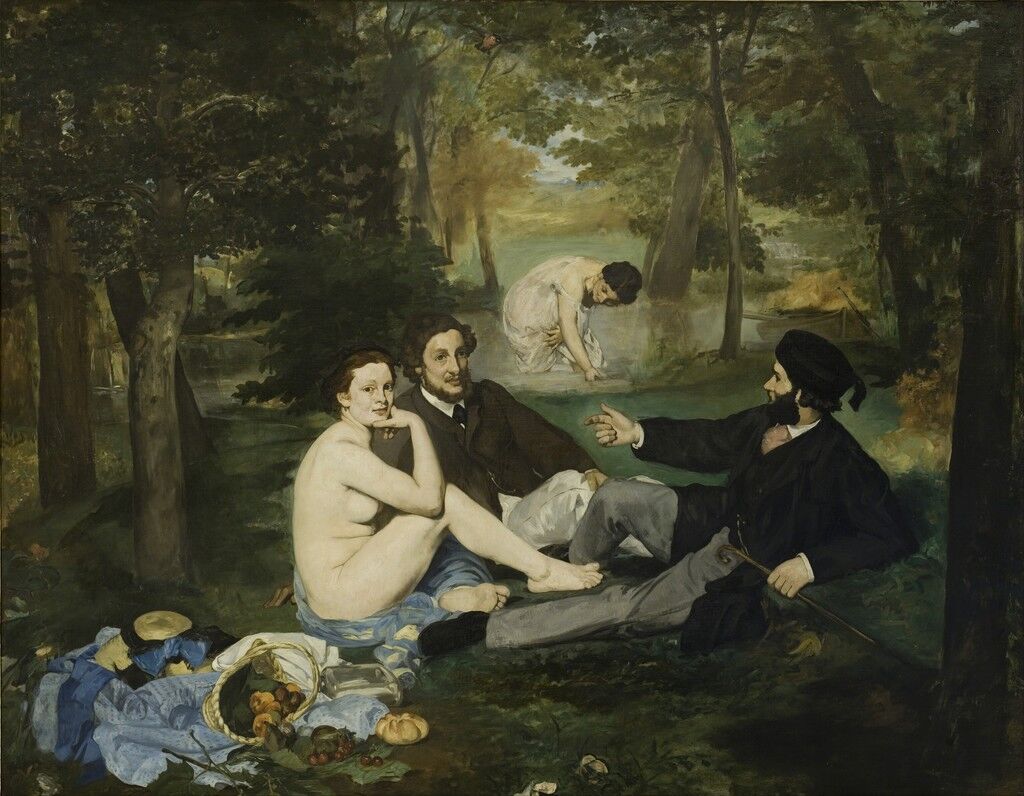
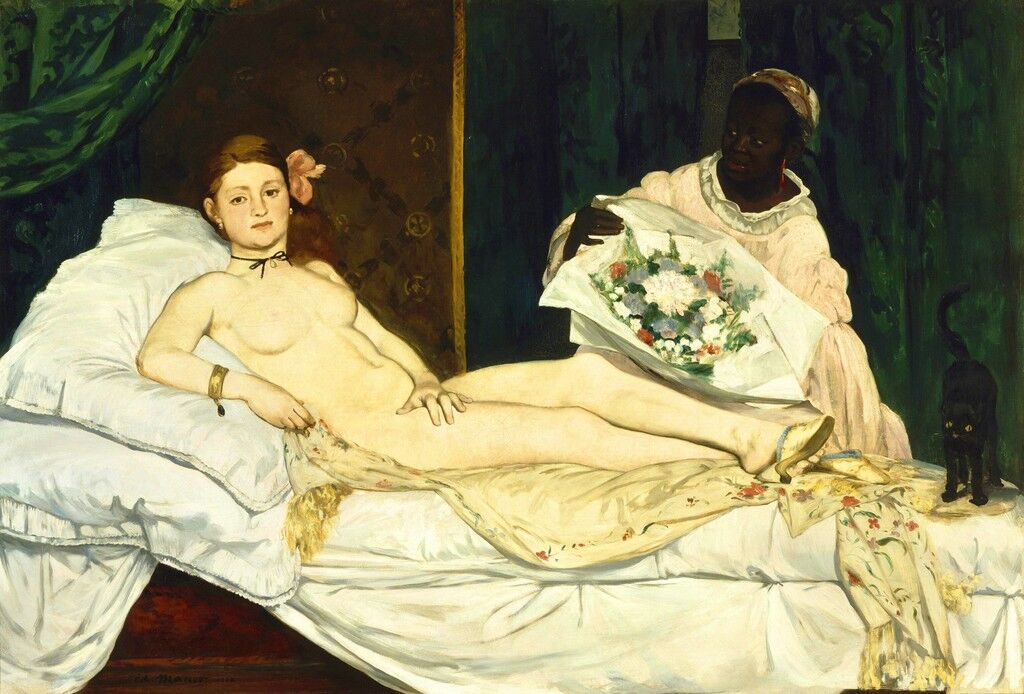

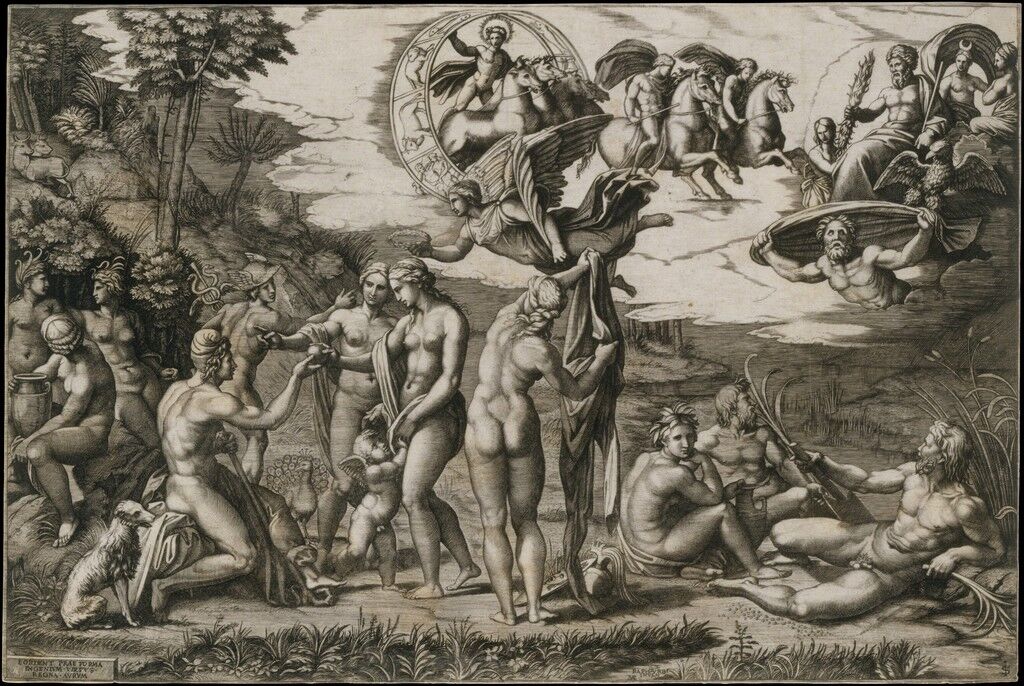
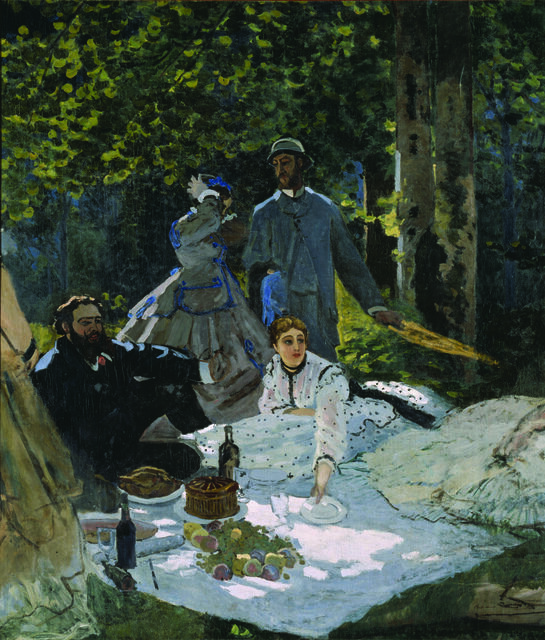

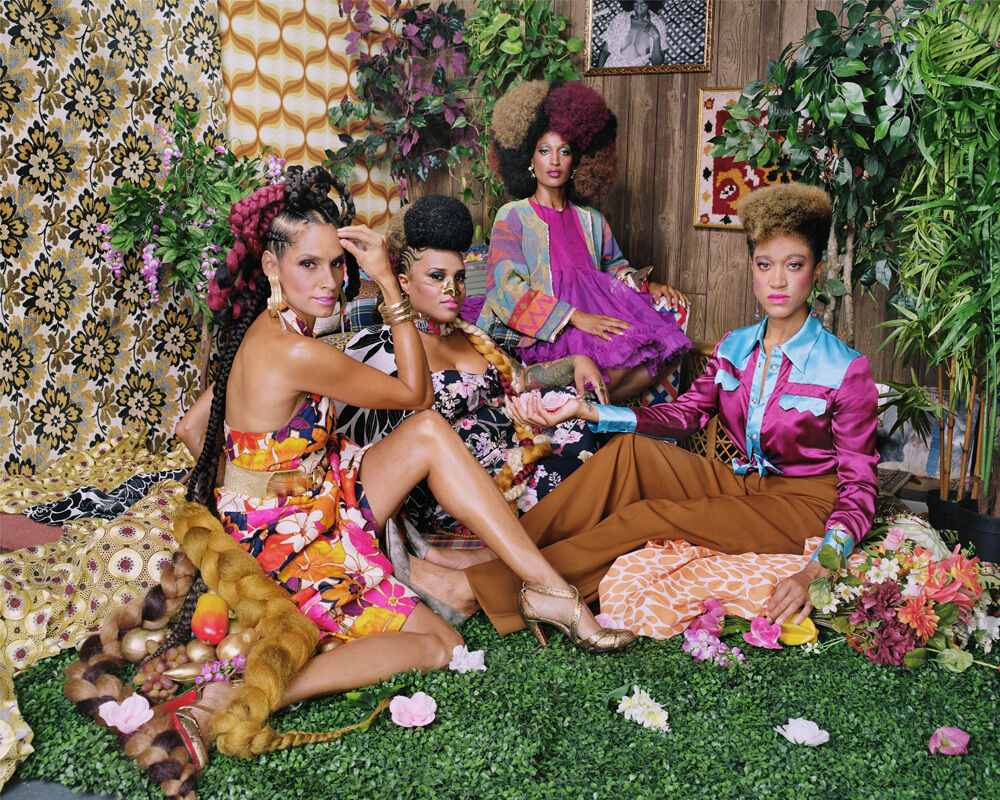
No comments:
Post a Comment